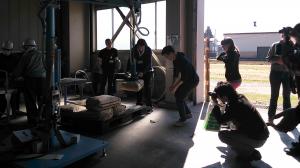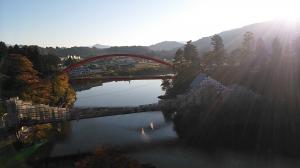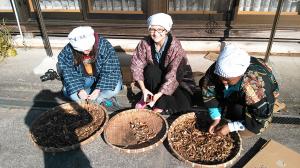We began our Aizu journey at JA Aizu in Inawashiro City, where we learned about the prefecture-wide rice testing that has been carried out since the 2011 disaster, and had the opportunity to see the testing in action. After a wonderful soba lunch, we visited the Nishiyama Geothermal Power Plant in Yanaizu City to learn about geothermal power generation and the benefits of such kinds of renewable energy. The next day, we attended a presentation by a company called IIE that was begun shortly after the disaster, and that uses Aizu cotton to introduce to Aizu some modern takes on traditional fabric crafts. We learned that the company provided job opportunities to many who were displaced by the disaster. These three visits reassured me that Fukushima is actively working towards recovery after the disaster, and it was wonderful to see the love that residents have for their home prefecture. In addition to learning about present-day recovery efforts, we saw some of Aizu’s more traditional past. We went to Enzoji Temple in Yanaizu City and learned the origins of Akabeko, and then painted our own Akabeko at Tsuruga Castle in Aizuwakamatsu City before touring the castle itself. We also stayed overnight with local farmers in Kitakata City and participated in farming activities like bean shelling in the morning. Enzoji Temple and Tsuruga Castle were beautiful, and so were the fall leaves of October that surrounded them. The balance between the modern aspects of Aizu like geothermal power and the traditional aspects like temples made for an interesting and fulfilling experience. I think I’ve come to understand Aizu, and Fukushima as a whole, much more because of this study tour. |
| Summary |










